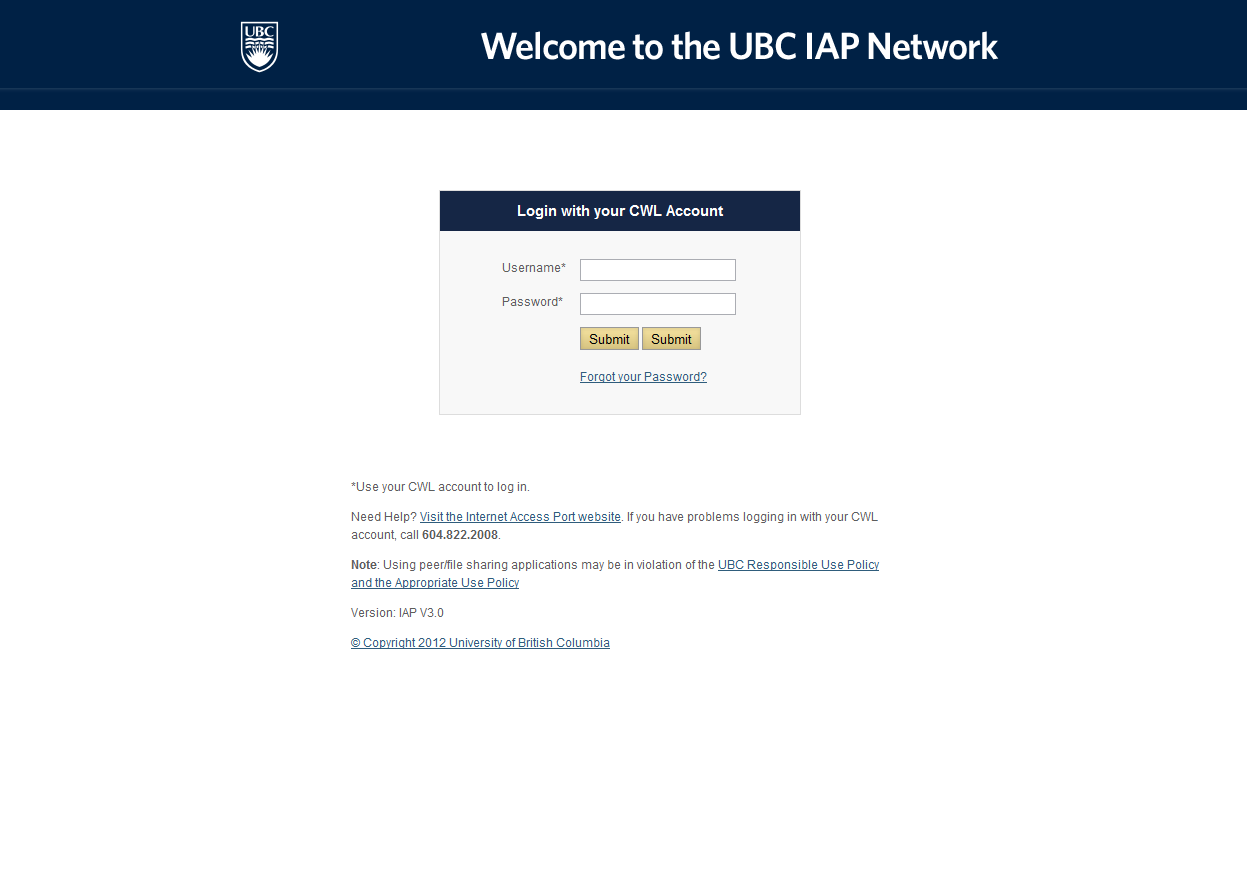Features and Benefits
Internet Access Ports (IAPs) are a convenient way to access the internet, and provide a more stable connection than the wireless network.
Requirements and Eligibility
Anybody with a free CWL account (UBC students, faculty, staff and guests) can use IAPs.
| System Requirements | Details |
|---|---|
| Account | Campus-Wide Login Account |
| Configuration | Must be configured to use DHCP |
| Software | Microsoft-supported versions of Windows 11 and 10 for ARM64-based PCs Windows 11* (64-bit), current Microsoft supported versions of Windows 10 x86(32-bit) and x64(64-bit), and Windows 8 macOS 12, 11.2, 10.15, and 10.14 (all 64-bit) Linux Red Hat 8 and 7 & Ubuntu 20.04, 18.04, and 16.04 (all x64) |
| Networking Hardware | A Network Interface Card (NIC) (also known as an Ethernet card) Ethernet Cable / Ethernet Patch Cord (Cat 5 / RJ45) |
Price
Internet Access Ports are free for anyone to use (provided you have a CWL account).
Learn More
Getting Started
Additional Information
Get Help
If you require assistance with your Internet Access Port,
